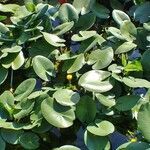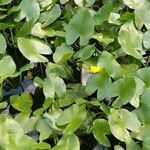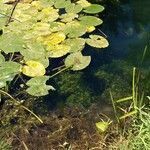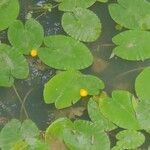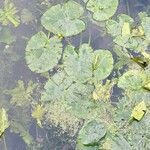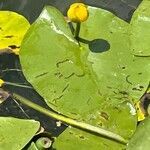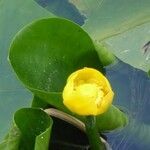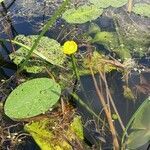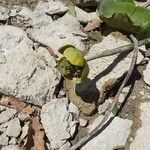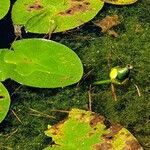Rhizomes stout, 3--8 cm in diam. Petiole ca. 50 cm, glabrous; floating leaf blade elliptic, 15--30 × 10--22 cm, leathery, abaxially glabrous or pubescent, adaxially glabrous, base cordate and basal lobes spreading. Flower 4--5 cm in diam. Peduncle to ca. 50 cm, glabrous. Sepals yellow, broadly ovate to orbicular, 2--3 cm. Petals linear, 1--1.5 cm, apex truncate to rounded. Anthers yellow, 4--7 mm. Stigmatic disc entire,7--19 mm in diam., rays 5--25. Fruit ca. 2.5 cm in diam. Seeds olive green, ovoid, ca. 5 mm. Fl. Jul--Aug. 2n = 34.
Aquatic herb. Rhizome stout, tuberous. Lvs floating or emergent, ovate, entire, glabrous, 12-30 × 9-20 cm; basal sinus deep, acute; basal lobes not usually overlapping. Fls emergent. Sepals (5)-6, elliptic, golden yellow, 2-3 × 1.5-2 cm. Petals obovate to spathulate, yellow, c. 1 cm long. Stamens numerous. Stigma rays 5-20, not reaching margin of disc. Fr. flask-shaped, 2-3 cm long.
